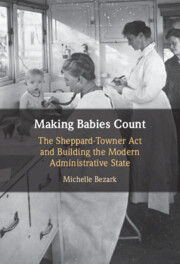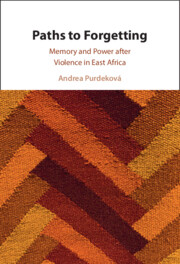Refine listing
Actions for selected content:
1299800 results in Books
Fashioning Futures
- Uncertainty and Young Women's Livelihoods in Urban Nigeria
- Coming soon
-
- Expected online publication date:
- May 2026
- Print publication:
- 31 May 2026
-
- Book
- Export citation

Introduction to Environmental Modeling and R
- Coming soon
-
- Expected online publication date:
- May 2026
- Print publication:
- 31 May 2026
-
- Textbook
- Export citation

Understanding Language through Humor
- Coming soon
-
- Expected online publication date:
- May 2026
- Print publication:
- 31 May 2026
-
- Book
- Export citation
How D. H. Lawrence Wrote
- Performance on the Page
- Coming soon
-
- Expected online publication date:
- May 2026
- Print publication:
- 31 May 2026
-
- Book
- Export citation

Evangelicalism in Latin America
- Historical Documents in Context
- Coming soon
-
- Expected online publication date:
- May 2026
- Print publication:
- 31 May 2026
-
- Book
- Export citation

Questions of Evidence in the UN Human Rights Treaty Bodies' Individual Communications Procedure
- Coming soon
-
- Expected online publication date:
- May 2026
- Print publication:
- 31 May 2026
-
- Book
- Export citation
Cause and Correlation in Biology
- A User's Guide to Path Analysis, Structural Equations and Causal Inference with R
- Coming soon
-
- Expected online publication date:
- May 2026
- Print publication:
- 31 May 2026
-
- Book
- Export citation
Mathematics Anxiety in University Non-Specialists
- Insights and Innovation
- Coming soon
-
- Expected online publication date:
- May 2026
- Print publication:
- 31 May 2026
-
- Book
- Export citation

The Cambridge Handbook of Natural Linguistics
- Coming soon
-
- Expected online publication date:
- May 2026
- Print publication:
- 31 May 2026
-
- Book
- Export citation
The Sciences of the Senses in Romantic Literature
- Sight, Touch, and Vision
- Coming soon
-
- Expected online publication date:
- May 2026
- Print publication:
- 31 May 2026
-
- Book
- Export citation

Monarchies of Extraction
- The Gulf States in the Global Food System
- Coming soon
-
- Expected online publication date:
- May 2026
- Print publication:
- 31 May 2026
-
- Book
- Export citation

The Path to Enlightened Investor Stewardship
- Coming soon
-
- Expected online publication date:
- May 2026
- Print publication:
- 30 June 2026
-
- Book
- Export citation
Communism in an Enchanted World
- Chinese Folk Religion under Mao Zedong
- Coming soon
-
- Expected online publication date:
- May 2026
- Print publication:
- 31 May 2026
-
- Book
- Export citation

Women's Health in Primary Care
- Coming soon
-
- Expected online publication date:
- May 2026
- Print publication:
- 31 May 2026
-
- Book
- Export citation
Supernatural Politics
- Mao Zedong and the Drive to Eliminate Religion in China, 1949–79
- Coming soon
-
- Expected online publication date:
- May 2026
- Print publication:
- 31 May 2026
-
- Book
- Export citation

The Cambridge Handbook of Ethnic and Racial Discrimination and Youth Development
- Coming soon
-
- Expected online publication date:
- May 2026
- Print publication:
- 31 May 2026
-
- Book
- Export citation

Rethinking Climate Policy
- Innovation and the Economics of Resource Creation
- Coming soon
-
- Expected online publication date:
- May 2026
- Print publication:
- 31 May 2026
-
- Book
- Export citation

Truth Commissions and International Law
- Jurisdiction, Representation, Authority
- Coming soon
-
- Expected online publication date:
- May 2026
- Print publication:
- 31 May 2026
-
- Book
- Export citation

Making Babies Count
- The Sheppard-Towner Act and Building the Modern Administrative State
- Coming soon
-
- Expected online publication date:
- May 2026
- Print publication:
- 31 May 2026
-
- Book
- Export citation

Paths to Forgetting
- Memory and Power after Violence in East Africa
- Coming soon
-
- Expected online publication date:
- May 2026
- Print publication:
- 31 May 2026
-
- Book
- Export citation
